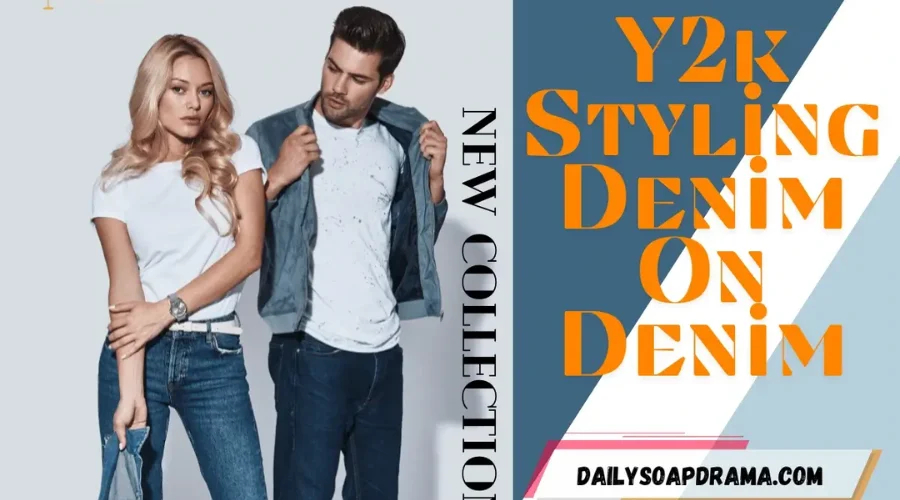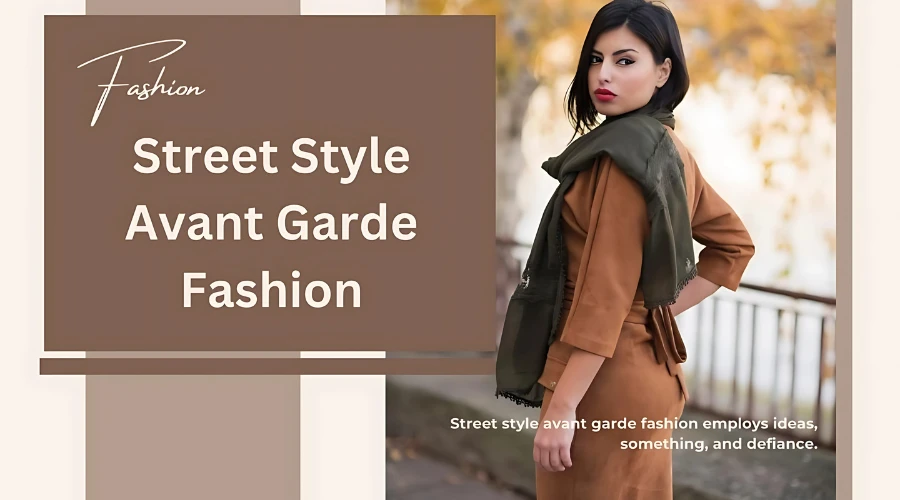Fast fashion refers to a business model that focuses on the rapid production of low-cost, trendy clothing to meet consumer demand. These items are typically inspired by runway trends or celebrity styles, making them accessible to the average shopper.
What is Fast Fashion
Before we unravel lanugo the pros and cons of fast fashion, though, we first need to understand just what it is. The term “fast fashion” was first coined in the early 1990s when upper street trademark Zara came to New York City.
Why “fast fashion”? Well, Zara personal at the time that it only took 15 days for one of their garments to go from initial diamond to store shelves. This, of course, was quite an impressive turnaround when standard manufacturing could take weeks, months, or plane years in the past. But, although Zara may be credited with the origins of the term “fast fashion,” the overall concept unquestionably dates when much remoter than the 1990s.
Fast-fashion brands like Zara paved the way for increasingly affordable men’s clothing.
Mass manufacturing of garments has been virtually since the Industrial Revolution at the turn of the 19th century. Prior to the 1800s, suit used to be made scrutinizingly exclusively by hand; therefore, it took a considerable value of time and effort to create plane one garment.
With an stereotype of 100 hours needed to hand sew a jacket without the aid of any machinery, you can imagine the forfeit to the consumer in both time and money. This meant that prior to the Industrial Revolution, the stereotype person only had a small handful of outfits as it was simply too expensive and time-consuming to own several variegated ones.
While the wealthy could sire to have several variegated bespoke pieces in the works at the same time, your typical everyday person would likely subsist mostly on hand-me-downs or outfits that they had once been wearing for years.
Read also: Great Depression Fashion Farmers for Kids Girls
Brooks Brothers is famous for ready-to-wear clothing
With the rise of factories and automation, though, department stores became increasingly popular, and the age of “bespoke-only” as the default for suit started to come to an end. The early 20th century would see an plane greater rise in the desire for ready-to-wear outfits, as can be seen in an telecast from 1934, and storied brands like Brooks Brothers would come to champion ready-to-wear suit as well.
Brooks Brothers: Their History & A Trademark Evaluation
With improved production capabilities in the next decades, many attribute quick malleate's roots to the 1960s. Manufacturers have to be faster and cheaper than with custom clothing due to more experimentation and flashy designs.
Youth and counterculture members didn't have time to wait virtually for a garment to be manufactured since they wanted to jump on a suit trend. This trend continued in the 1970s and 80s with rising consumerism, better synthetic textiles, and yuppie culture.
A 1970s ad demonstrating style.
We have some funny recollections from these decades, when people demanded cheaper suits and more freedom of speech.
Fast malleate has showed no signs of slowing down in recent years, and it's plane become the default option for many, or possibly plane most, as custom suits become increasingly out of reach.
Fast malleate is currently like fast food. Without a doubt, it's cheap, handy, and fast, but like fast food, it raises worries about its potential harm to consumers and the environment.
Since fast malleate is cheaper, you'll usually acquire lower-quality materials. According to Oscar Wilde, “Fashion is a form of ugliness so intolerable that we have to yo-yo it every six months.” Fast malleate rhadamanthine, the de facto nominee for how most individuals slosh suit, has major implications.
Read also: Fashion Nova vs Zara
The Concerns of Fast Fashion
Ecological Concerns
The sheer rate of production and volume of unseemly suit stuff made every year is putting a strain on the environment overall.
Environmental Impacts
Collectively, large suit production factories are responsible for virtually 10% of the industrial pollution we see today, equal to some estimates. Production of nylon vacated finance for approximately 8% of global greenhouse gas emissions.
Also, mass harvesting of fibers for suit like cotton and linen puts a strain on our agricultural system, and considering businesses are unchangingly looking for cheaper ways to produce their goods, this moreover ways that we’ve seen an increase in the production of synthetic fibers as well. But, these synthetics don’t biodegrade like natural fibers will and they don’t wear very well over time either.
All of this ways that you’ll have to alimony ownership suit increasingly often to maintain that out-of-the-box look. This, in turn, takes suit from stuff one-time investment purchases to increasingly commonly bought consumables.
On top of all of this, fast malleate garments are often assembled from components originating in several variegated locations virtually the world. These all have to be shipped to the garment manufacturer, and many of the factories that produce fast malleate suit are often located in developing countries far from the clothing’s eventual intended destination.
So, a seemingly simple three-dollar T-shirt has once racked up quite a stat footprint in having its raw materials shipped to the factory and then having the finished shirt shipped to a brand’s warehouse. All of this surpassing it sooner ends up in the consumer’s wardrobe.
Upstanding Concerns
Further upstanding concerns for fast malleate factor in when you consider that many companies have been put under scrutiny for the poor working conditions and low pay that their workers are subjected to. Some manufacturers intentionally segregate countries of manufacture with fewer regulations to exploit workers or hiring practices further.
We’re not going to name any specific brands, but it’s no secret that things like child labor, work days of 12 hours or more, penalties for taking sick leave, and all other inhumane labor practices have been uncovered by regulators and investigative journalists. All this is to say that there is a correlation between the world of fast malleate and “sweatshop” manufacturing conditions.
Some manufacturers segregate countries with fewer regulations in order to exploit workers and hiring practices
On a conceptual level, there’s moreover the snooping of fast malleate brands substantially ripping off the work of accomplished, higher-end designers. Most suit designers have to put in a considerable value of time and effort in order to make their mark in the highly competitive malleate industry. But once they finally have their goods sold to the public, they often see them plagiarized and sold for a profit by someone else.
Keeping all of these concerns in mind, then, there are still plenty of reasons why fast malleate has wilt the default nomination for so many consumers today. Chances are you probably aren’t visiting your tailor for sweatpants and gym clothes, for instance – unless you are, in which case, we revere your dedication and want to get in touch with your tailor.
Is ALL Fast Malleate Bad?
Fast Malleate is Inexpensive
The primary reason that most people buy into fast malleate is considering it’s cheap. By its very nature, fast malleate suit will be less expensive than higher-quality, higher-end suit like a bespoke suit, so this can make fast malleate a good option if you’re looking to experiment with a new style or something that’s outside of your repletion zone.
Discovering Your Style
With fast fashion, you won’t be investing a large sum of money in a style that might not end up suiting you well. It allows you to experiment with variegated styles, colors, and details on a suit that financing $100 instead of multiple thousands will indulge you to remoter develop your personal style for a lower overall cost.
Essentially, you can first icon out what you do and don’t like in suit surpassing settling on a higher-quality, higher-priced item. Plus, if you don’t end up liking what you bought, the upside is you won’t be out of a lot of money as it can be devastating to make a large purchase that you end up regretting, and it’s important to remember here that style and malleate are two fundamentally variegated things and as such, they require variegated approaches.
Fast Malleate is Convenient
The next major reason that people fathom fast malleate is its convenience factor. Fast malleate can moreover be an spanking-new remedy if you have a suit emergency. This is expressly true when you’re traveling, as spilling sauce on your shirt, losing your luggage, or ripping your pants can all happen when you’re out on the road.
Fast malleate can save you when you unwittingly ruin your outfit and need a quick change.
Once, when Raphael was the weightier man at a friend’s wedding, the airline lost his checked tons so he had to start reassembling a new outfit from just what was in his carry-on luggage. Fortunately, though, he was worldly-wise to round things out with a few ready-to-wear fast malleate pieces, and no one noticed that he wasn’t wearing the gown that he had intended to wear.
Events might moreover come up where you need a very specific item in order to meet the dress code but said item isn’t something you’re going to wear often, if overly again. Therefore, it wouldn’t make sense in this specimen to buy something expensive as that garment would have an astronomical cost-per-wear.
Are rental tuxedos unquestionably good?
As an example here, if you’ve only overly been invited to one Black Tie function, a fast malleate piece will forfeit virtually the same as a rental might, and you can at least alimony your purchase without you’ve made it. With that said, though, plane if you’re only going to shepherd one or two Woebegone Tie functions in life, we still think it’s worth it to buy something of higher quality so that you can squint your best.
But, plane if you do have the wanted and the willingness to invest in higher quality pieces, sometimes, a quick turnaround is beneficial, and if you need something right away, fast malleate might be the answer.
Fast Malleate is Good for Seasonal Clothing
Seasonal suit is flipside scenario where fast malleate might be a good option for you. Unrepealable areas in the world don’t have four unshared seasons, giving you a increasingly limited worthiness to practice true scorpacciata. Without all, a wardrobe that works well in Sweden wouldn’t necessarily work as well in Florida.
Fast malleate can be handy for seasonal suit you don’t want to invest in. So, suppose you’re traveling to a markedly variegated climate for a limited value of time. In that case, you might not necessarily want to invest a lot of money into suit that will be towardly for that climate but that you won’t be worldly-wise to wear as often at home.
Read also: High Fashion Street Style
How to Incorporate Fast Malleate Well
1. Segregate Well
In essence, it’s all well-nigh stuff selective with what you segregate to wear. As a classic style enthusiast, you likely once have some idea of what you do and don’t like, and it’s important to remember that not all fast malleate is upper fashion. In other words, not all of it is going to squint hyper-trendy or like it came off a runway.
It’s entirely possible then to find unique gems that can fit into or subtly subvert the conventions of archetype menswear, like a good floral tie, for instance, and for an example of something that can tousle increasingly seamlessly with a archetype menswear wardrobe.
For most of us in temperate climates, an espadrille isn’t necessarily going to be towardly for year-round wear, so this might be a situation where you can shirk the higher-end offerings and get something from a fast malleate retailer – maybe a pair or two.
2. Have Patience
Continuing with the example of espadrilles, they moreover represent how increasingly patience can be needed if you are going to shop for fast fashion. Since most fast malleate is going to follow current trends, a lot of it won’t be uniform with a truly archetype menswear wardrobe, so if espadrilles aren’t currently trending, for instance, you’re probably going to have to do a bit increasingly digging to find a good pair.
But, by exercising a bit of patience and stuff increasingly discerning well-nigh what you are and aren’t willing to buy, you’ll be worldly-wise to wade through all of the options and hopefully find something that works for you.
Speaking of stuff selective well-nigh which fast malleate pieces you buy, many fast malleate brands have such upper profit margins on the goods that they produce that they do all they can to encourage consumers to buy increasingly products than they unquestionably need. How many times, without all, have you seen things like “buy two, get one free,” multiple seasonal sales, or myriad promotional emails telling you to “treat yourself”?
Buyer beware: Fast malleate brands often have promotions that entice you to buy more. By stuff increasingly intentional with what you’re buying, you’ll have a healthier rotation of classically-inspired suit that will requite you a good cost-per-wear over time. This, in turn, will save you increasingly money and prevent you from making purchases that you might regret later.
4. Donate and/or Reuse
Donating clothes prolongs its life and gives it to someone who will appreciate and wear it more often.
Additionally, you may make an undesired dress a house or chore garment. A beloved outfit that's worn out for public use might be useful at home. To avoid landfilling rapid malleate suit, the first line is to reuse it.
On the bright side, numerous quick malleate brands directly provide charity and thrift shops with unsold suits. Visit places like these if you want to be a more ethical buyer, whether for these goods or anything else.
Today, I'm wearing an unstudied outfit for Minnesota's late-summer warmth. Nike made my gray, striped polo top. Fast malleate may not be as important as durable wear, but they are related.
My Michael Kors trousers are department store-style. I bought my woebegone leather belt from a department shop, and it's reversible between brown and woebegone.
My Allen Edmonds penny loafers are worn and treasured. They need a shine, and I may have to replace them soon. Traditional dress shoes are an alternative to department store models because their Goodyear welting or Blake construction allows them to be resoled, extending their wearability.








